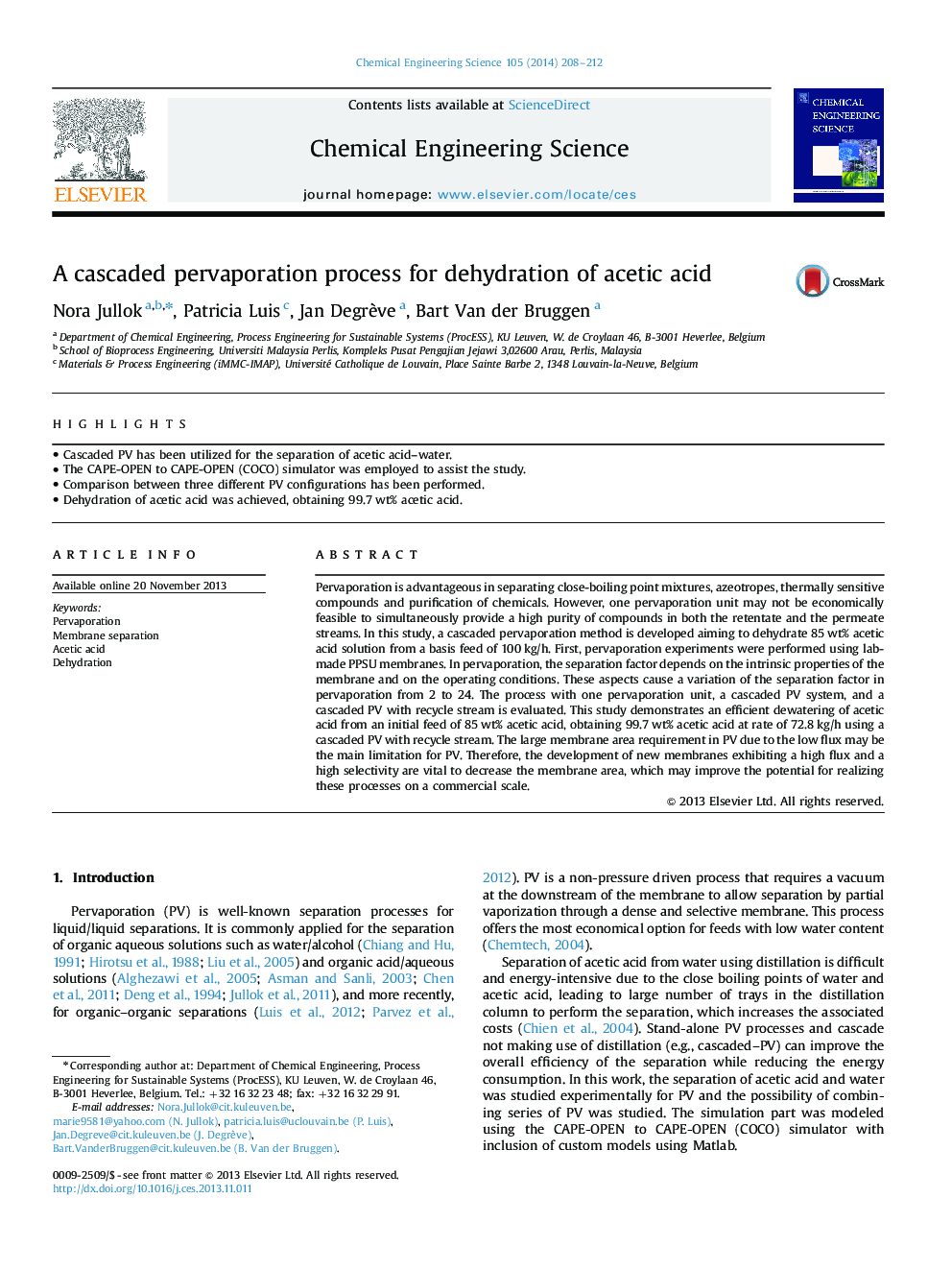| کد مقاله | کد نشریه | سال انتشار | مقاله انگلیسی | نسخه تمام متن |
|---|---|---|---|---|
| 154990 | 456876 | 2014 | 5 صفحه PDF | دانلود رایگان |
• Cascaded PV has been utilized for the separation of acetic acid–water.
• The CAPE-OPEN to CAPE-OPEN (COCO) simulator was employed to assist the study.
• Comparison between three different PV configurations has been performed.
• Dehydration of acetic acid was achieved, obtaining 99.7 wt% acetic acid.
Pervaporation is advantageous in separating close-boiling point mixtures, azeotropes, thermally sensitive compounds and purification of chemicals. However, one pervaporation unit may not be economically feasible to simultaneously provide a high purity of compounds in both the retentate and the permeate streams. In this study, a cascaded pervaporation method is developed aiming to dehydrate 85 wt% acetic acid solution from a basis feed of 100 kg/h. First, pervaporation experiments were performed using lab-made PPSU membranes. In pervaporation, the separation factor depends on the intrinsic properties of the membrane and on the operating conditions. These aspects cause a variation of the separation factor in pervaporation from 2 to 24. The process with one pervaporation unit, a cascaded PV system, and a cascaded PV with recycle stream is evaluated. This study demonstrates an efficient dewatering of acetic acid from an initial feed of 85 wt% acetic acid, obtaining 99.7 wt% acetic acid at rate of 72.8 kg/h using a cascaded PV with recycle stream. The large membrane area requirement in PV due to the low flux may be the main limitation for PV. Therefore, the development of new membranes exhibiting a high flux and a high selectivity are vital to decrease the membrane area, which may improve the potential for realizing these processes on a commercial scale.
Journal: Chemical Engineering Science - Volume 105, 24 February 2014, Pages 208–212
